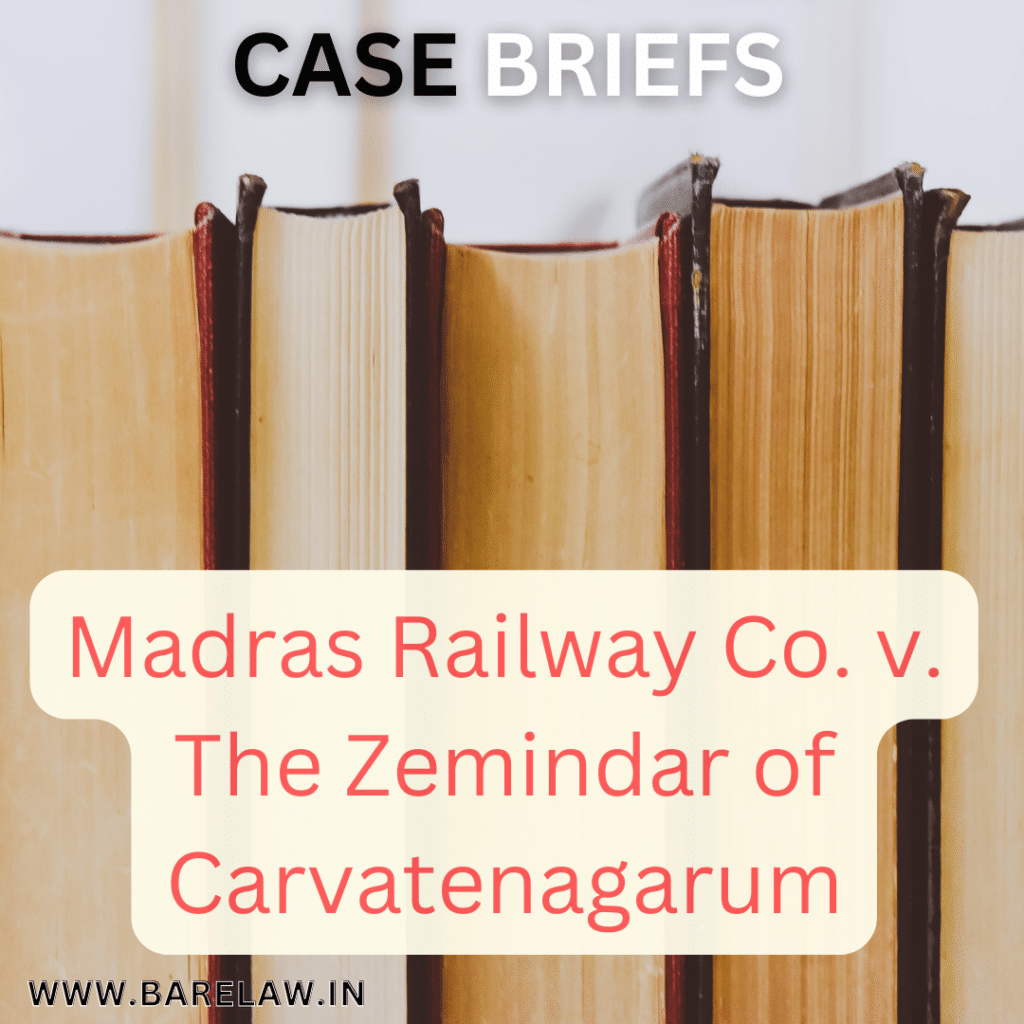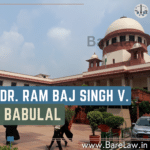
Case Brief of Madras Railway Co v The Zemindar of Carvatenagarum
The Madras Railway Co. v. The Zemindar of Carvatenagarum is a case that was heard by the Judicial Committee of the Privy Council in 1873. The case involved a dispute between the Madras Railway Company and the Zemindar of Carvatenagarum, who owned land adjacent to a railway track owned by the railway company.
The railway company had constructed a culvert to carry water from the railway track to a nearby river. The culvert discharged the water onto the land of the Zemindar, which caused damage to his crops. The Zemindar filed a suit against the railway company, seeking compensation for the damage caused.
The railway company argued that they had a right to discharge the water onto the Zemindar’s land under the principle of natural user. The principle of natural user allows a landowner to make reasonable use of his land, even if it causes some harm to his neighbor’s land.
The Zemindar argued that the railway company did not have a right to discharge the water onto his land, as it was not a reasonable use of their property. He also argued that the railway company had not taken adequate measures to prevent the damage caused by the discharge of water.
The Privy Council held that the railway company did not have an absolute right to discharge the water onto the Zemindar’s land, even under the principle of natural user. The railway company was required to take reasonable precautions to prevent damage to the Zemindar’s land, and if they failed to do so, they could be held liable for the damage caused.
In this case, the Privy Council found that the railway company had not taken reasonable precautions to prevent damage to the Zemindar’s land. They ordered the railway company to pay compensation to the Zemindar for the damage caused by the discharge of water onto his land.
The decision in The Madras Railway Co. v. The Zemindar of Carvatenagarum was that the railway company did not have an absolute right to discharge water onto the Zemindar’s land, even under the principle of natural user. The railway company was required to take reasonable precautions to prevent damage to the Zemindar’s land, and if they failed to do so, they could be held liable for the damage caused.
In this case, the Privy Council found that the railway company had not taken reasonable precautions to prevent damage to the Zemindar’s land. They ordered the railway company to pay compensation to the Zemindar for the damage caused by the discharge of water onto his land. Therefore, the decision was in favor of the Zemindar and against the railway company.
The case of The Madras Railway Co. v. The Zemindar of Carvatenagarum was heard by the Judicial Committee of the Privy Council in 1873.
The case involved a dispute between the Madras Railway Company and the Zemindar of Carvatenagarum, who owned land adjacent to a railway track owned by the railway company. The railway company had constructed a culvert to carry water from the railway track to a nearby river, and the culvert discharged water onto the Zemindar’s land, causing damage to his crops.
The railway company argued that they had a right to discharge the water onto the Zemindar’s land under the principle of natural user, but the Zemindar disagreed, arguing that the railway company did not have a right to do so as it was not a reasonable use of their property.
The Privy Council held that the railway company did not have an absolute right to discharge the water onto the Zemindar’s land and that they were required to take reasonable precautions to prevent damage. As the railway company had failed to take reasonable precautions, they were ordered to pay compensation to the Zemindar for the damage caused.
The case is significant in establishing the principle that a landowner’s right to make reasonable use of their land must be balanced against their responsibility to prevent harm to their neighbor’s property.





